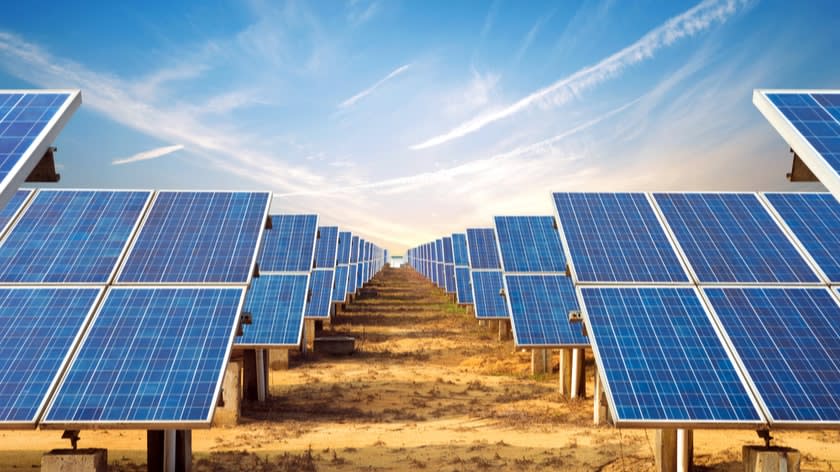Metals remain crucial for net zero technologies

The race is on to decarbonize the world by 2050. There are certain technologies that are crucial to help to this endeavour. However, these technologies depend on a number of raw materials that are experiencing rapid demand growth and high concentration of supply chains in particular countries. In this report we focus on what materials are used in the decarbonization technologies, how prices have developed and what we expect in the near-term and the longer term.
The energy transition is metal-intensive and many metals have an important role to play in a sustainable future
Given the high need for these metals in the energy transition, the demand outlook for most of these metals remains favourable…
…but all-in-all, a return to the peak levels of price indices of 2022 – and thus input costs for low-carbon technologies – is not likely in the short term due to the unfavourable macro-outlook
The race is on to decarbonize the world by 2050. There are certain technologies that are crucial to help in this endeavour. However, these technologies depend on a number of raw materials that are experiencing rapid demand growth and a high concentration of supply chains in particular countries. In this report we focus on what materials are used in the decarbonization technologies, how prices have developed and what we expect in the near-term as well as the longer term.
Emergence of low-carbon technologies
Demand for low carbon technologies are rising rapidly. Not only because the EU adopted targets to achieve a 32% share of renewable energy in the energy mix, but also due to the energy crisis and the high levels of gas prices. Renewable energy per capita is high in the Netherlands compared to other countries in Europe. This is mainly due to the stronger growth of renewable energy in the Netherlands since 2019 (+65%). Compared to surrounding countries, renewable energy per capita in 2021 in the Netherlands is below Germany and well above the European average. In Belgium too, renewable energy per capita has risen sharply over the past decade (+129%), more than 75%-points above the European average. But the Belgian rate of growth does not match the Dutch growth in the amount of renewable energy per capita over the past decade (+179%). According to CBS, the share of renewable energy in the Netherlands is around 15% of total energy consumption. This was 13% in 2021. The 2%-point increase is mainly due to strong growth in solar and wind energy consumption.

Because many more new solar panels were added in the Netherlands in recent years, the total installed capacity of solar panels has risen sharply. Much more than other countries in Europe. According to CBS, that capacity would have been increased by 28% on an annual basis by 2022. Energy consumption from wind power has also continued to increase. Last year, it increased by 13%. Offshore wind power generation has a share of around 40% and onshore 60%. Dutch consumption from onshore wind power grew 25% year-on-year last year, while offshore wind generation remained stable in 2022. Again, a sharper increase in the share of wind energy generation can clearly be seen since 2019, while others countries lagged behind.
High metal intensity
The energy transition is metal-intensive and many metals have an important role to play in a sustainable future. From the charts below it becomes clear that base metals are widely used and incorporated in various low-carbon technologies, such as solar panels, wind turbines, geothermal and energy storage. In the production of clean technologies, base metals such as aluminium, steel, nickel and copper in particular are processed in large volumes. These materials are used in almost every clean technology. The price trends of these metals therefore largely determine the price trends in those of the clean technologies.

Bulk versus critical metals
Moreover, it is important to determine if the material is a bulk or critical. Bulk materials are materials that used in substantial quantities in these technologies such as cement, steel and aluminium. The IEA expects that demand for these materials would not increase significantly in the net zero scenario, partly because of efficiency and the geographic concentration of bulk material is expected to decrease gradually. Next to bulk materials there are also critical materials. Critical materials are important for clean energy technologies and infrastructure and that could lead to supply gaps if sufficient efforts are not taken to scale up supply. The volumes of critical materials tend to be small relative to other materials. Some of them are produced in relatively small volumes, China dominates the extraction, the processing, or both, and there is a large supply and demand gap due to the surge in demand. The graph below shows the critical material demand per technology in net zero scenario.

Prices rose exponentially in 2020-2022
How have prices developed? In this section we focus on the price developments of critical metals mentioned above and then go on to assess trends in overall commodity price index for clean technologies. Given the outlook for current technologies, demand for critical materials such as lithium, copper, nickel, cobalt and neodymium are set to rise enormously because all countries are mainly looking at the same technologies. So the rationale often made is that prices will go sky high. This is what happened between 2020 and the peak in 2022, where prices of lithium, copper, nickel, cobalt and neodymium increased between 110% (copper) and 550% (lithium). The prospect of strong demand from decarbonisation technologies was an important driver for these substantial increase in prices but not the only reason. The exponential price rise in Nickel was also the result of expected lower supply from Russia triggered by the Russia-Ukraine war.

Substantial price decline after a strong rise
Since prices peaked in 2022, prices of these critical metals have declined substantially and in some cases they are back at the 2020 levels. Has the long term outlook for these metals changed? Generally this is not the case and supply shortages are expected for these metals in the long run. But not only do long-term developments have an effect on the price outlook, shorter term dynamics also play a role. Prices have declined mainly because of the following reasons. First, the growth outlook has deteriorated and fears for recessions in major economies have resulted in weakening of the demand outlook in the near-term. Second, there has been some destocking taking place in some of the materials. Third, there have been announcements of possible new mines outside China and more supply have come available. If the economic outlook is better than expected, and the market has anticipated already the supply that becomes online in the near term, prices will probably recover again. This is because the long-term demand outlook continues to look favourable. Moreover, higher interest rates increase the financing costs for developing a mine. The drive to decarbonize the mining sector generally also has an upward effect on the cost of mining. It is likely that these dynamics will support the prices of these metals. But there is a big IF.
The big IF
What if technology is changing and one of these materials could become obsolete in the use of any new decarbonisation technologies? This is already to some extent happening to cobalt. There is some desire to diversify away from cobalt in batteries because of concerns about human right issues at the mines in Congo, the main supplier of the metal. One way to do this, is to increase the nickel content in a battery at the expense of cobalt. Another way is to use batteries in EVs and storage that have no cobalt content at all such as Lithium Iron Phosphate (LFP) batteries. LFP batteries are mainly used in storage, but more car manufacturers start using LFP batteries because they are cheaper and don’t contain cobalt en nickel. If this trend, towards more LFP batteries, were to continue, demand for nickel will also fall. These are examples of how a metal that is now deemed critical will be no longer be necessary for a certain decarbonization technology just because of a change/development in technology. Such a development will completely change the long-term demand outlook for this material and the price outlook as well. And this could not only happen to cobalt or nickel but also to other materials.
Outlook for our transition commodity price index
As long as the decarbonisation technologies need certain materials, the price outlook is favourable. When we combine the metals needed per low-carbon technology, weighted in a separate commodity price index per clean technology, we get an indication of the price trend of the input cost of making the technology in question. From the four different price trends, it is noticeable that those of solar panels and wind turbines follow a fairly identical pattern over time. This is because the price trends in steel and aluminium – both with a high share in the raw materials input structure – are broadly parallel to each other. It is also notable that the prices of energy storage and geothermal have increased significantly more sharply than those of solar panels and wind turbines as of February 2022. Energy storage technology involves two perspectives: (1) on the one hand, it relates to battery technology to power electric vehicles, and (2) on the other, it involves storing energy from electricity generation from solar and wind farms, including grids. For energy storage, it is particularly the price of nickel and lithium that are responsible for a sharp rise in the price index. At the same time, these metals are also responsible for the downward correction from May 2022. The input costs for geothermal systems have risen sharply due to much higher titanium and nickel prices, but these prices also decline more sharply from May 2022. Input costs for low-carbon technologies have continued to decline from their historical peaks since early 2023. Meanwhile, input costs for solar panels, wind turbines and energy storage are back on 2018 levels, while input costs for geothermal are still about 40% above them.

In the near term all this means that a return to peak levels of price indices - and thus input costs - for low-carbon technologies is not likely. For the coming months, the trend in the ABN AMRO Transition Commodity Index will remain largely dependent on economic conditions in China and the outlook for the global economy. The Chinese economy currently still shows too much weakness and is still not running at full speed. This is mainly due to headwinds from the property sector and the global growth slowdown and tensions between the US and China. China's manufacturing sector is also in relatively weaker shape and the slowdown in investment will continue for some time to come.
This article is part of the SustainaWeekly of 19 June 2023

